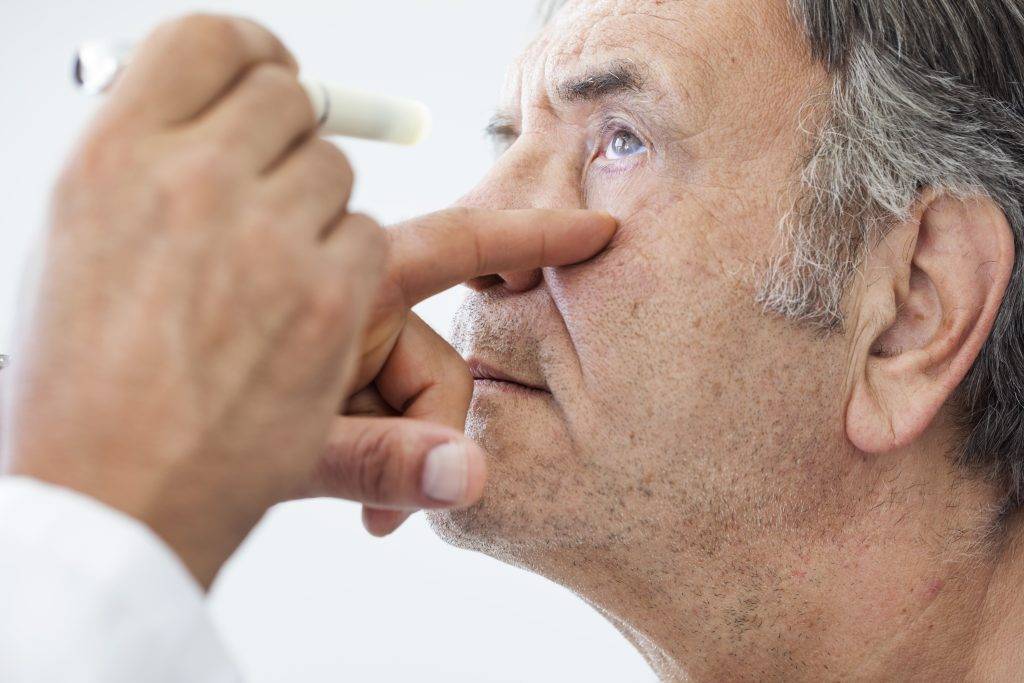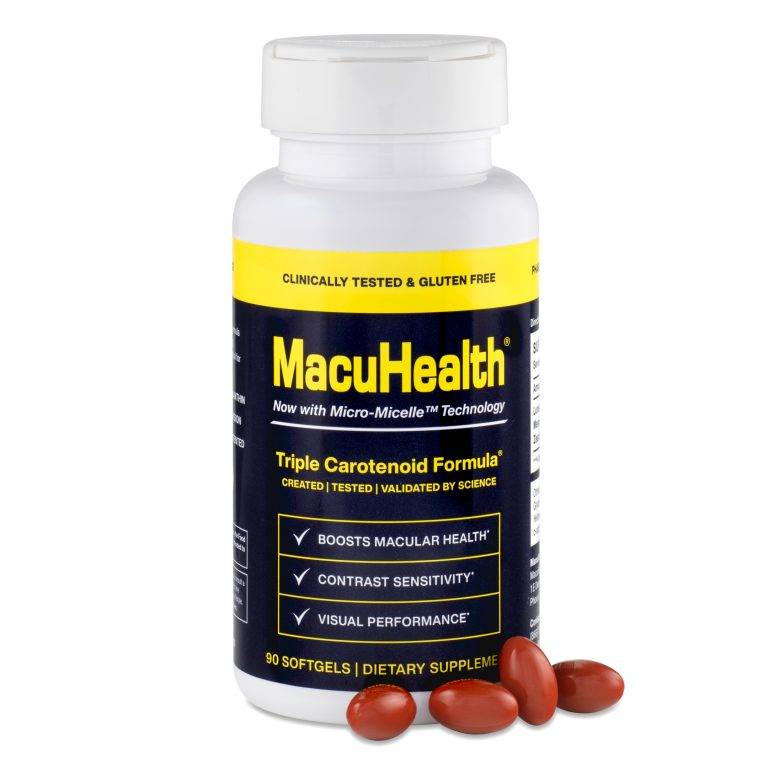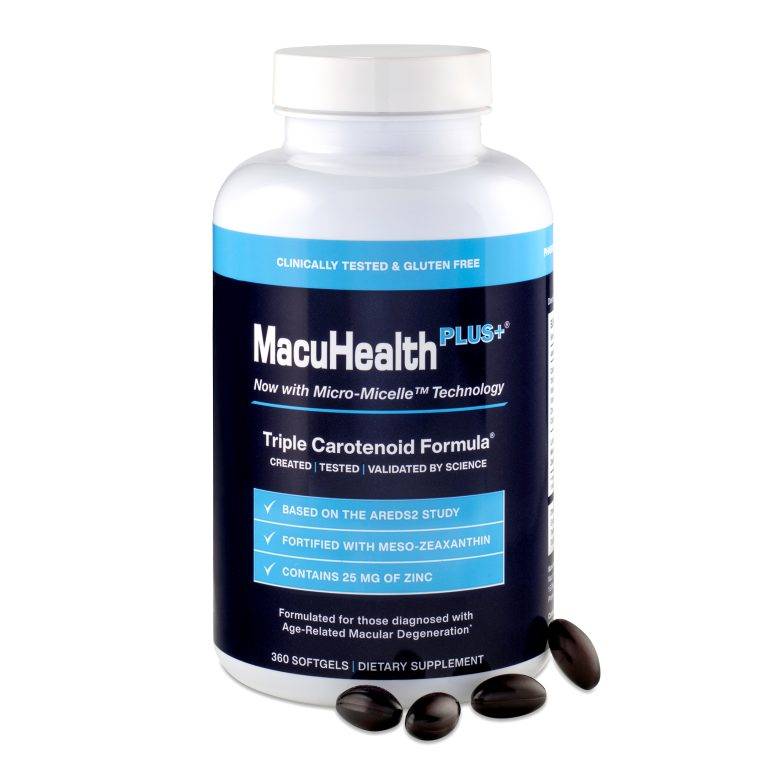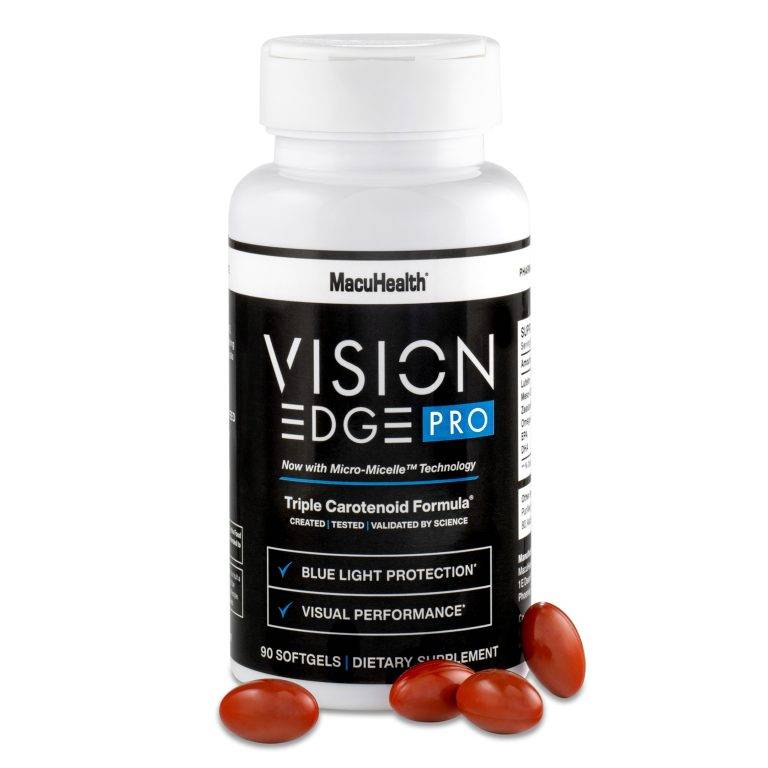
Written by MacuHealth
Reviewed by Jim Stringham, Ph.D.
It can be terrifying and confusing when you’re diagnosed with age-related macular degeneration (AMD). But this doesn’t have to lead to a decline in your quality of life. Most people with AMD have the less severe dry form of the disease. Patients can still read, drive their car and run errands just as they did before being diagnosed. The late, or “wet,” stage accounts for approximately 10 percent of cases but causes legal blindness in 90 percent of disease sufferers.
While there isn’t a cure, researchers are developing new therapies to help patients manage AMD symptoms. These include ocular injections that can slow vision loss and supplements with crucial nutrients that feed the eye. These nutrients are three macular carotenoids – Lutein, Zeaxanthin and Meso-Zeaxanthin – that rebuild macular pigment, the part of the retina responsible for central vision. We’ll look at some macular degeneration treatments that can help manage the disease.
Here are some extensive and invasive macular degeneration treatments your eye care professional may recommend if you’ve progressed to the wet stage of AMD. This stage occurs when new blood vessels grow underneath the macula, the part of the retina that facilitates central vision, causing fluid or blood to leak into your eye and obstruct your line of sight.
Doctors typically inject Avastin or other anti-angiogenic drugs into a patient’s eye to block the growth of blood vessels. Then this macular degeneration treatment must be performed regularly, usually every month, to maintain vision levels.
Your doctor will shine a powerful light into your eye to destroy any irregularly growing blood vessels in the retina. Additionally, a similar macular degeneration treatment utilizes a drug the doctor injects into the bloodstream. When the laser is shined into the eye, the drug is activated, leading to the blockage of abnormally growing blood vessels.
Doctors can insert a device into the eye called an implantable miniature telescope. Once inside, it magnifies and enhances the sight of those with advanced AMD.
The best way to prevent and manage AMD symptoms is to visit your eye doctor regularly. This is especially important if you have a history of vision issues in your family. In addition to a typical eye exam, your optometrist will check for the disease by having you look at an Amsler grid. It is a series of straight horizontal and vertical lines. If any of the lines appear wavy, this is a sign that you’re developing AMD.
Another easy way to help prevent and manage the disease is to wear sunglasses. And if you’re a smoker, stop. Doctors also recommend a diet with green vegetables such as kale and spinach. They’re rich in antioxidants known as carotenoids. These nutrients replenish macular pigment, which absorbs dangerous blue light and blocks free radicals.
But modern farming conditions have caused a decrease in the nutritional value of food. Now the average American consumes 1/20th of the recommended amount each day.1 This isn’t enough to improve visual performance and manage AMD progression. Thankfully, supplementation is a viable way to replenish macular carotenoids.
Studies show that supplements containing all three macular carotenoids boost macular pigment. Consistent, daily use of high-quality supplements like MacuHealth is an excellent way to ensure that the body receives the proper amount of carotenoids needed to support visual health and performance.

Formulated by scientists and clinically proven to support eye health for both healthy and diseased eyes.

Based on the AREDS2 formula with 10 mg of Meso-Zeaxanthin and reduced levels of zinc for the ultimate defense against AMD.

Created for those wanting to protect against blue light and improve visual performance for everyday maintenance.

Sourced from small, open-water catch fish from the coast of Chile, TG Omega-3 provides customized dosing for patient specific needs.